Erector: Metal construction modelling sets invented in 1911 and patented in 1913 by A. C. Gilbert. Very similar to the earlier Meccano by Frank Hornby.
Before the word "Robot" was coined and popularised from 1920 onwards, walking machines resembling people were called "Mechanical Men" or "Automatons". Erector called one of their early moving constructions a "Doll".
-x640.jpg)
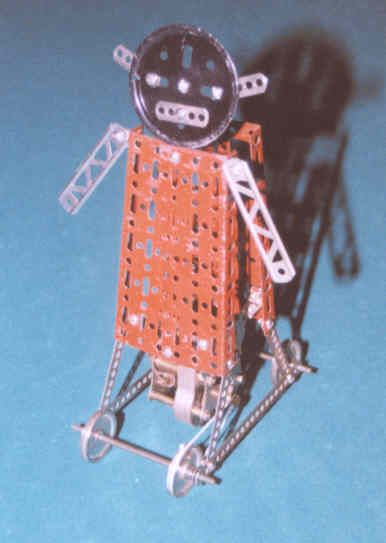
Walking Doll from 1916.
Popular Science, December 1948, the Christmas edition, described the Erector Walking Robot.

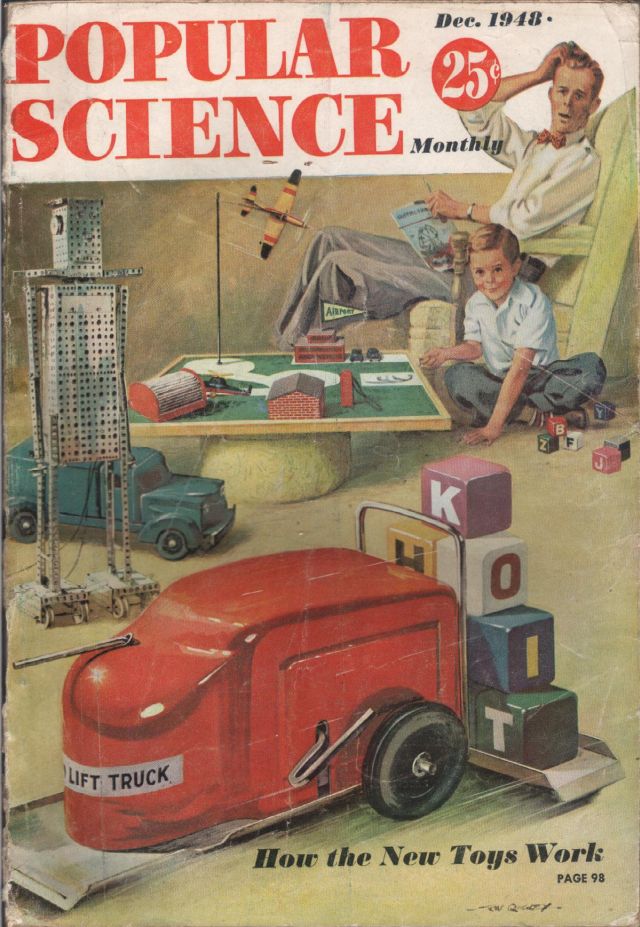




A.C. Gilbert Erector Robots – These images and text sourced from girdersandgears.com .
In the late 1950s and early 1960s the space race was on, and outer space was on America's collective consciousness. Television, movies, books, comics, and other popular media reflected this, and robots were prevalent throughout. One of my favorite books at the time was Tom Swift and His Giant Robot. First published by Grosset & Dunlap in 1954, it was the fourth title in the New Adventures of Tom Swift series. This book, like many other titles in the popular series, was written by James Duncan Lawrence under the pen name Victor Appleton II. I began reading Tom Swift's adventures in the late 50s, at about the same time that I received my first Erector set. Like many of you who may be of a similar age, I was fascinated by the robot models in the Erector set manual. Imagine, as much fun as it was to read about them or watch them at the movies on a Saturday afternoon, now I could actually build a real robot of my own! Clearly, A.C. Gilbert and his engineers and designers also had a fascination with mechanical men, because during this period at least eight different robot designs appeared in Erector manuals, culminating with the most famous of them all, the Master Builder Mysterious Walking Robot (#8 below).
As the various models shown below indicate, Erector robots fell into a few different groups. The four simplest designs (1-4 abovebelow) rolled on large MH wheels; of these, three used motors to propel them along the floor. Two of these motorized robots could also swing their arms, and one even bowed forward and back as it rolled along.
Four of the robots were more complex designs (5-8 below) that were built with the larger Erector sets. These were the now famous "walking" robots.


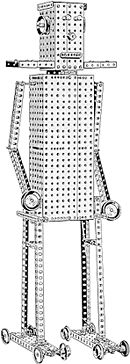
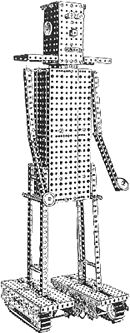
All images are from the 1959 Master Builder's Manual. Sets used to build each robot are as follows:
1. Engineer's Set (No. 10032); essentially equivalent to the older 3½
2. Automatic Radar Scope Set (No. 10042); essentially equivalent to the older 5½
3. Rocket Launcher Set (No. 10053); essentially equivalent to the older 6½
4. Action Conveyor Set (No. 10063); essentially equivalent to the older 7½
5. Musical Ferris Wheel Set (No. 10073); essentially equivalent to the older 8½
6. Amusement Park Set (No. 10083); essentially equivalent to the older 10½
7. Master Builder's Set (No. 10093); essentially equivalent to the older 12½
8. Same as #7
-x640.jpg)
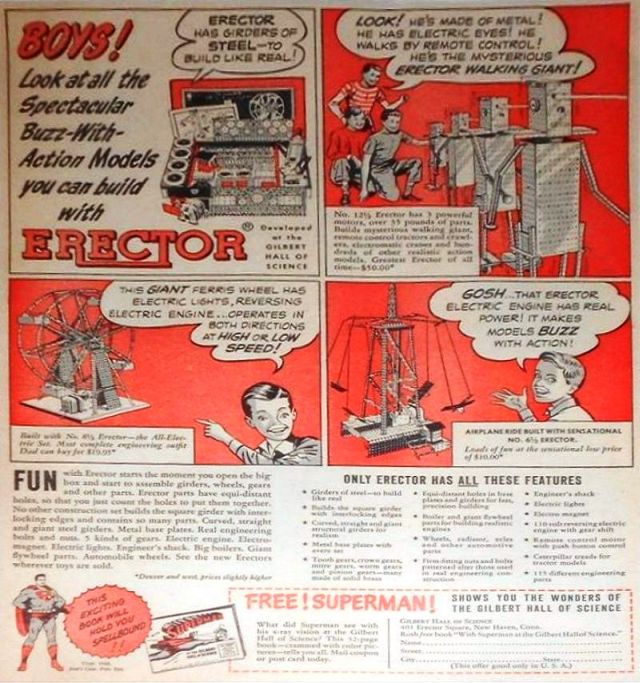
Magazine advert for Erector including robot.
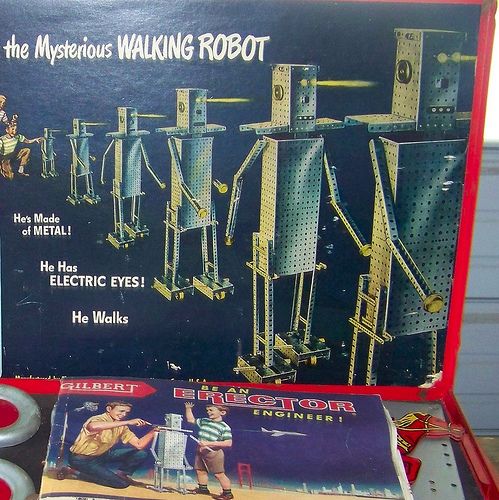

Instructions for Mysterious Walking Robot pdf found at girdersandgears.com .
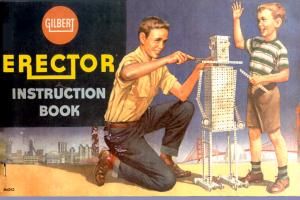
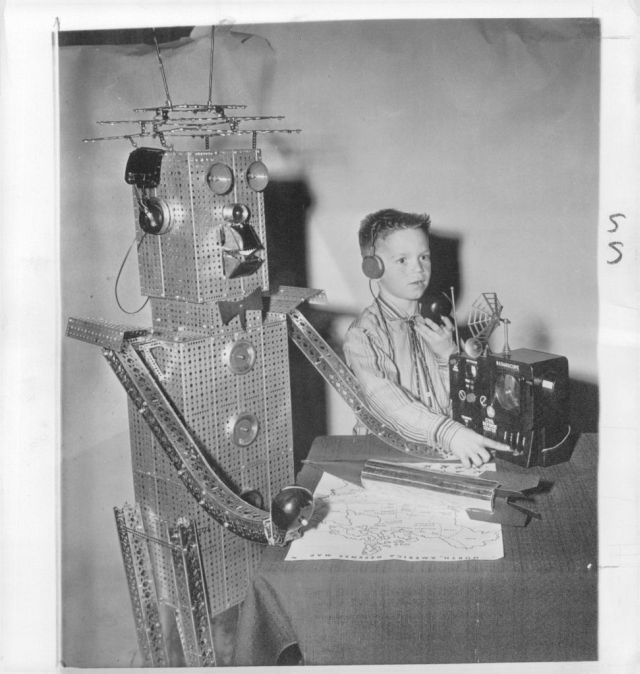
6 Mar 57 – Tom Gillespie, 7, operates a radarscope in front of an electronic robot at a display in New York's Sheraton-McAlpin Hotel, where thousands of toys are being shown at 54th annual Americal Toy Fair.
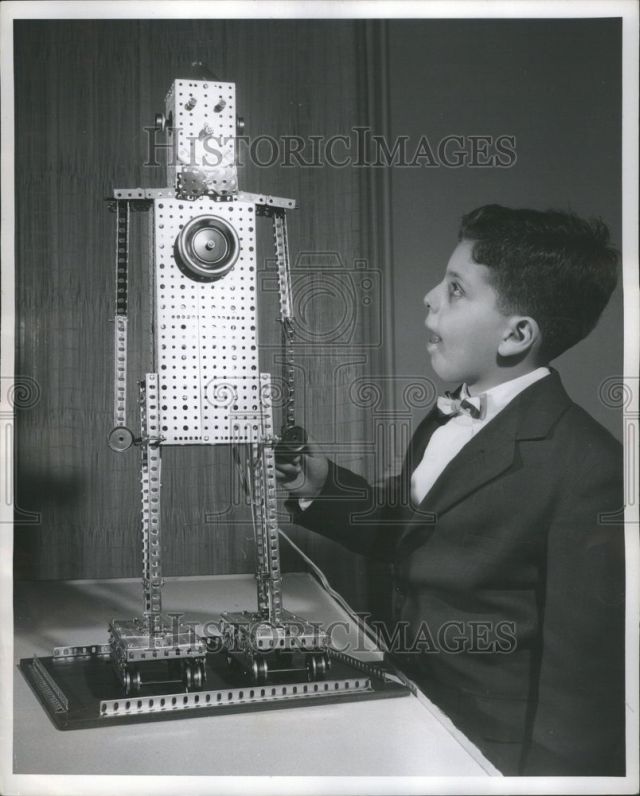
Press image dated 1958.
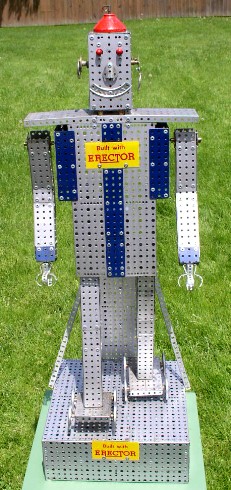
Store promotional Robot.
-x640.jpg)